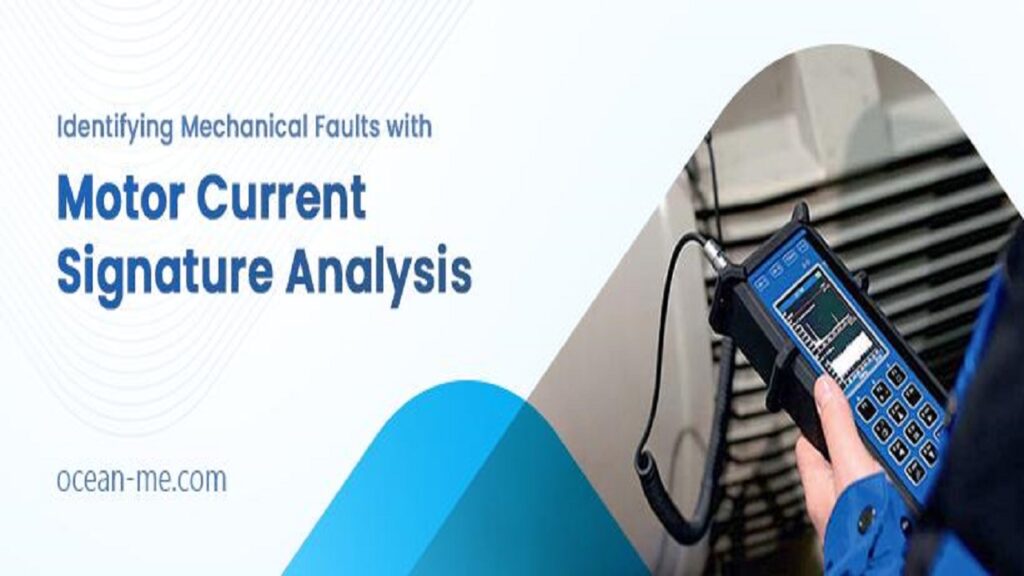Induction motors are well-liked and often used in industries because they are reliable, dependable, and affordable. They are crucial in the industrial process of converting electrical energy to mechanical energy. Problem diagnosis is crucial to ensure that they are frequently maintained, operated safely, and reliably. Several tried-and-true methods and pieces of equipment can be used to keep an eye on induction motors and make sure they work reliably and consistently.
Unfortunately, abrupt system failures and decreased motor lifespans continue to plague many businesses. There are several monitoring techniques, including temperature monitoring, vibration monitoring, etc., but MCSA will provide more information required for predicting the health status of motors.
Motor Current Signature Analysis: What Is It?
Without interrupting production, motor current signature analysis can help determine the induction motor’s operational state. In other words, it can identify defects at an early stage and recognise an electrical signal with current components. So, it is a very important tool for figuring out when a motor is broken and thereby preventing machine damage.
Motor current signature analysis is the technique of capturing motor current data and analyzing it in the frequency domain. It can help with several things, including locating rotor issues and motor air gap issues.
It serves as a useful tool for preventive maintenance on a variety of industrial machinery. Even though it is a fairly new technique, it is quickly becoming more popular because it gives accurate results and can aid in detecting problems early.
You may also like to read:
- How to Consider Machine Alignment to Avoid Equipment Failures
- What Is Reliability Centered Maintenance? A Simple Guide
- Frequent Causes Of Piping Vibration And Their Repercussions On Piping Systems
Advantages of Motor Current Signature Analysis
Analysis of motor current signatures has several advantages, including the ability to spot trends in certain failure modes. For instance, rotor bar damage, pump cavitation, and other faults will show quite distinct patterns from bearing issues. The different ways a machine can break down leave different marks on the sine wave, which helps maintenance experts figure out the most likely reason for machine breakdown.
The following is a list of the flaws that motor-current signature analysis can help you spot:
- Voltage and electrical imbalances
- Safeguarding personnel and the workforce
- Mechanical or electrical issues with the stator
- Equipment downtime
- Faulty bearings
- The rotor bar has been damaged
- Dynamic irrationality
- An ongoing eccentricity
- Risks
How Is Fault Frequency Determined Using Motor Current Signature Analysis?
In motor current signature analysis, the frequency spectrum, also known as the current signature, is collected by processing the current signal. In the event of a failure, the frequency spectrum diverges from that of the motor in good condition. Signal processing techniques are used for induction motor defect detection and condition monitoring because they are efficient and simple to apply. Additionally, putting MCSA into practice aids in obtaining a precise fault analysis.
The decibel (dB) versus frequency spectrum is used to locate the unique current signature patterns and provide a larger dynamic range of distinct problems. It aids in locating flaws such as stator flaws, rotor walks, bearing flaws, eccentricity, or a combination of these flaws.
How Does Motor Current Signature Analysis Work at Ocean Technical and Mechanical Services?
At Ocean Technical and Mechanical Services, our specialists are skilled at performing motor current signature analysis. The MCSA system hardware is installed in the motor control cabinet, as opposed to the traditional tools, which need downhole placement. The clamp meter is placed in the control panel by our staff in less than 10 minutes; once done, the equipment begins to collect data while in use. This guarantees a consistent flow of reliable data.
The device logs signal abnormalities and a quick analysis can inform maintenance personnel of the most likely reason for a mechanical failure as well as identify issues before they fail. Time-domain data is used to record the motor current signature, and a fast Fourier transform is used to look at the data.
Overall, motor current signature analysis is the most successful technique since it offers highly specialized but economical condition monitoring for various industrial machines.



